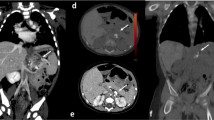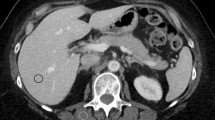Abstract
Aim To determine the impact of decreasing patient dose on image quality or diagnostic information during diagnostic thorax examination using computed tomography/CT/at University Clinical Hospital Mostar/UCH/. Methods Images were acquired using a CT General Electric LightSpeed 16 slice scanner. There were 62 adult patients with different input diagnoses involved in this research, which lasted from March 1st 2018 to June 1st 2018. After determination of patient dose, the objective was optimization of protocol parameters for the purpose of lowering the dose received by patients, in a manner that does not jeopardize image quality or diagnostic information. A thoracic radiologist using a double-stimulation method assessed image quality according to the European Guidelines on image quality criteria for CT 16262/EUR16262 EN/, followed by calculation of dose efficiency factor figure of merit/FOM/. Results Changing the protocol parameters enabled a significantly decreased patient dose. Visualization of pulmonary anatomical structures was not significantly changed by decreasing the dose. The mean FOM before optimization was 1.28 mSv−1 and 2.46 mSv−1 after optimization (p < 0.001). Conclusion By changing the parameters of the protocol a significant dose reduction was achieved without affecting the diagnostic information.
Access provided by Autonomous University of Puebla. Download conference paper PDF
Similar content being viewed by others
Keywords
1 Introduction
Every day around the world, ionizing radiation is used for the imaging of patients in more than 10 million diagnostic radiology procedures. Unnecessary exposure of patients can arise from medical procedures that are not justified for a specified objective, the application of procedures to individuals that are not justified on the basis of their conditions, and medical exposures that are not appropriately optimized for the situation in which they are used. There are a number of current trends in the medical use of ionizing radiation, which have led to current attempts to address this issue in relation to the radiation protection of patients. A major trend is the rapid increase of new technology for medical exposure and the corresponding speed of the clinical introduction of this technology. In particular, the increased use of CT scanners for radiological imaging procedures, associated with relatively high patient doses, is a clear trend [1].
University Clinical Hospital Mostar performs approximately 3500 thoracic CT examinations for different diagnostic purposes yearly. This anatomical region was chosen as the first imaging region for parameter optimization in University Clinical Hospital Mostar, due to the large number of patients that have exams performed on this area. The structure of the thorax is characterized by large differences in the attenuation of the high native contrast ratio, making it possible to significantly decrease the dose without affecting image quality.
2 Methods
This prospective study lasted from March 1st 2018 to June 1st 2018 and was divided into two phases. In the first phase of this study, 31 patients with a mean age of 62.96 years were imaged using a standard CT protocol for the thorax (Table 1).
In the second phase, 31 patients with a mean age of 57.97 years were imaged using an optimized CT protocol for the thorax (Table 2).
After processing the data from the first phase of the study, a multidisciplinary approach was taken to optimize the CT protocol. The team consisted of a thoracic radiologist, a medical physicist and a radiographer.
The first important step is to provide optimal patient centering. Prior studies have proved the importance of appropriate patient centering in the gantry isocenter for CT scanning [2].
Tube current increase strength increases the number of photons emitted by the X-ray tube. For practical reasons, the magnitude of the mAs is usually used, which is the current strength multiplied by the scan time expressed in seconds [3]. Reducing current power is the simplest way of reducing the current because the radiation dose is proportional to the power of the current. For example, if the current is reduced by 50% this will also reduce the radiation dose by half, but increases in image noise which can affect the diagnostic outcome of the examination must be considered [4].
In the basic protocol, the current was fixed at 400 mA. In this study the ACE technique CT offers has been utilized, which is a technique with a user specified image quality metric to modulate tube current according to body shape and body regions [2]. On the GE CT device, when selecting the AEC technique the noise index parameters and the minimum and maximum mA can be set (Table 2). To decrease motion artifacts, it is prudent to keep faster rotation times for most chest CT examinations. Most modern CT scanners should allow the use of 0.4 to 0.5 s gantry rotation times for chest CT, which reduces scan time and, if all other parameters are kept constant, helps dose reduction as well [2]. Gantry rotation time was reduced for this study from 0.8 to 0.6 s.
The pitch factor for most chest CT examinations should be kept close to or slightly higher than 1:1 [2]. According to this recommendation the pitch factor was changed from 1.375:1 to 0.938:1 (Table 2).
Parameters for the estimation of image quality were defined according to guidelines EUR16262 EN and were used in the analysis of various anatomical structures of the chest: the thoracic wall, mediastinum, trachea, mousse parenchyma and principal bronchi.
In this study, a double-stimulation method\DS\ was used. The observer, a thoracic radiologist, was provided in a blinded manner with the original and the optimized image being tested.
This method can have two modes of assessment:
-
1.
The observer evaluates both images and the result is a comparison of these ratings
-
2.
The viewer chooses a higher quality image.
The first evaluation method was used in this research.
For evaluation, the observer used a five-degree scale: 1—very poor visibility, 2—poor visibility, 3—acceptable visibility, 4—good visibility, 5—excellent visibility. Based on the sum of all parameters, the final image quality rating (Ci) was determined. The value of the image quality rating index (the sum of all parameter values divided by the number of parameters—Fi) was calculated using Formula (1).
For the effective dose calculation, a simple estimate of the effective dose was used [5]. The figure of merit/FOM/value for each patient was calculated by Formula (2).
The mean FOM value was used as a relative indicator of the image quality difference between the groups of patients scanned before and after optimization of the imaging protocol [6].
3 Results
A total of 62 adult patients were involved in this study, consisting of 26 (42%) males and 36 (58%) females. The age of patients ranged from 38 to 80 years, with a median age of 62 years (Table 3). Patient ages were normally distributed (p = 0.0961).
A comparison of CT dose index volume/CTDIvol/was made before and after optimization. A T-test showed significant reduction of CTDIvol after protocol optimization (p < 0.001). Median CTDIvol before optimization was 21.48 mGy, with a maximum value of 26.05 mGy and a minimum value of 14.48 mGy. Median CTDIvol after optimization was 11.67 mGy, with minimum and maximum values of 6.13 and 18.65 mGy, respectively (Fig. 1).
A T-test confirmed a significant reduction in dose-length product/DLP/after protocol optimization (p < 0.01). The median DLP value prior to the imaging was 2111 mGycm, with a minimum value of 1361 mGycm and a maximum of 2964 mGycm. After the optimization of the DLP median value, 1352, 668 and 1952 mGycm were measured as the median, minimum and maximum values, respectively (Fig. 2).
The average image quality grade before and after the optimization was compared. A Mann Whitney U test showed no significant improvement (z = −2.408, p = 0.016), but no significant reduction in image quality after optimization of the CT thorax exam protocol. The image quality rating range before optimization was 3.20 to 4.70, while the median was 3.90. After optimization, the median image quality rating was 4.20, and the image quality rating ranged from 3.20 to 5.00 (Fig. 3).
The median FOM factor before optimization was 1.28 mSv−1 (IQR 0.23 mSv−1). The median FOM factor after optimization was 2.46 mSv−1 (IQR 0.97 mSv−1). A Mann Whitney U test showed a significant increase in the FOM factor (z = 5.777, p < 0.001) (Fig. 4).
4 Discussion
By changing the parameters of the protocol a significant dose reduction was reached without affecting the diagnostic information.
The median value of CTDIvol in the images scanned with the optimized protocol was significantly lower than the images acquired with the standard protocol (p < 0.001). The same difference was obtained by changing the exposure parameters of Tables 1 and 2. Similar results were obtained from Prasad et al. [7] in a lung cancer study in patients older than 65 years.
However, the tube potential (measured in kilovolts) was not changed in this study. The change in radiation dose is approximately proportional to the square of change in tube potential. In general, the recommendation for chest CT is to perform the exam at 80 kV in patients smaller than 50–60 kg and at 100 kV for patients weighing up to 75–80 kg [2].
The DLP per sequence was also analyzed, and found to be significantly lower in the optimized protocol in comparison to the standard protocol (p < 0.01), this is a consequence of the decreased CTDIvol.
The significant increase of the FOM factor (p < 0.001) is a clear indicator that a reduction of the patient dose while maintaining quality diagnostic information has been achieved.
4.1 Limitations of This Study
-
In this study patients with different input diagnoses on CT exam of the thorax were included. For better results patients with same input diagnosis need to be involved.
-
Most chest CT scans should be performed as a single pass or phase examination. Either single noncontrast or single postcontrast image series are sufficient for most chest CT examinations. The number of phases was not reduced in our study.
-
The tube potential (measured in kilovolts) was not changed in this study.
References
Holmberg, O., Malone, J., Rehani, M., et al.: Current issues and actions in radiation protection of patients. Eur. J. Radiol. 76, 15–19 (2010)
Singh, S., Kalra, M., et al.: Radiation dose optimization and thoracic computed tomography. Radio Clin. N. Am. 52, 1–15 (2014)
Øberg, M.: Patient doses for CT examinations in Denmark. Doctoral thesis. Submitted to the Department of Electrical Engineering at the Technical University of Denmark, University of Copenhagen (2011)
Kalra, M., Maher, M.M., Toth, T.L., et al.: Strategies for CT radiation dose optimization. Radiology 230, 619–628 (2004)
ICRP. ICRP Publication 60: Recommendations of the international commission on radiological protection. Int. Comm. Radiol. Prot. 60, 1–3 (1991)
Simonji, H.D.: Procjena doza i optimizacija protokola pri standardnim pregledima višeslojnom kompjuterizovanom tomograjom; Doktorska disertacija. Univerzitet u Novom Sadu, Medicinski fakultet (2015)
Prasad, S., et al.: Standard-dose and 50% reduced dose chest CT: comparing the effect on image quality. AJR 179(2), 461–465 (2002)
Holmberg, O., Czarwinski, R., Mettler, F.: The importance and unique aspects of radiation protection in medicine. Eur. J. Radiol. 76, 6–10 (2010)
Beganović, A.: Kožne doze kod perfuzije kompjuterizovanom tomograjom; Doktorska disertacija. Univerzitet u Sarajevu, Prirodno—Matematički fakultet (2013)
European Guidelines on quality criteria for computed tomography. EUR16262 EN
Conflicts of Interest
None.
Author information
Authors and Affiliations
Corresponding author
Editor information
Editors and Affiliations
Rights and permissions
Copyright information
© 2020 Springer Nature Switzerland AG
About this paper
Cite this paper
Lasić, I., Galić, K., Beganović, A., Lasić, V., Čiva, L., Krasić-Arapović, A. (2020). Dose Optimization of CT Thorax Exam in University Clinical Hospital Mostar. In: Badnjevic, A., Škrbić, R., Gurbeta Pokvić, L. (eds) CMBEBIH 2019. CMBEBIH 2019. IFMBE Proceedings, vol 73. Springer, Cham. https://doi.org/10.1007/978-3-030-17971-7_18
Download citation
DOI: https://doi.org/10.1007/978-3-030-17971-7_18
Published:
Publisher Name: Springer, Cham
Print ISBN: 978-3-030-17970-0
Online ISBN: 978-3-030-17971-7
eBook Packages: EngineeringEngineering (R0)








